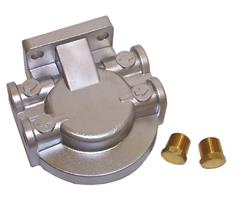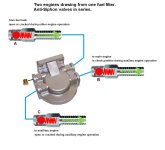1990 4.3 v6 - Bluewater 19’ Cuddy -
I got my 4 stroke kicker mounted with a new lift bracket the other day, and it already has a hole in the stern with a rubber grommet for the fuel line going to the motor.
But there are no accommodations for hooking the trolling motor fuel line to th main gas tank. I want to eleminate the carry on fuel tank. Can I simply put a tee in the fuel line between the electric fuel pump and the tank?
oooops! I spelled fuel wrong on the topic heading...
thanks, Kirk
I got my 4 stroke kicker mounted with a new lift bracket the other day, and it already has a hole in the stern with a rubber grommet for the fuel line going to the motor.
But there are no accommodations for hooking the trolling motor fuel line to th main gas tank. I want to eleminate the carry on fuel tank. Can I simply put a tee in the fuel line between the electric fuel pump and the tank?
oooops! I spelled fuel wrong on the topic heading...
thanks, Kirk
Last edited:



